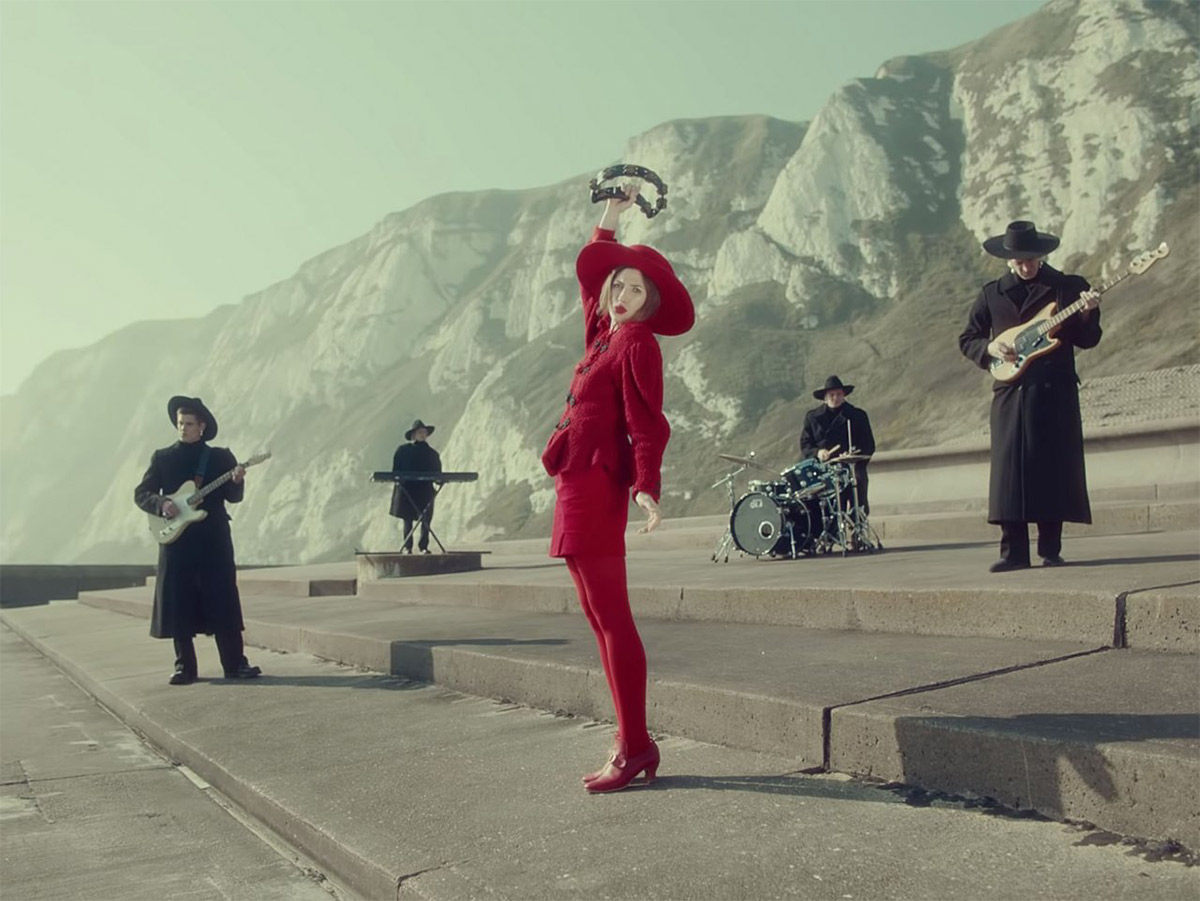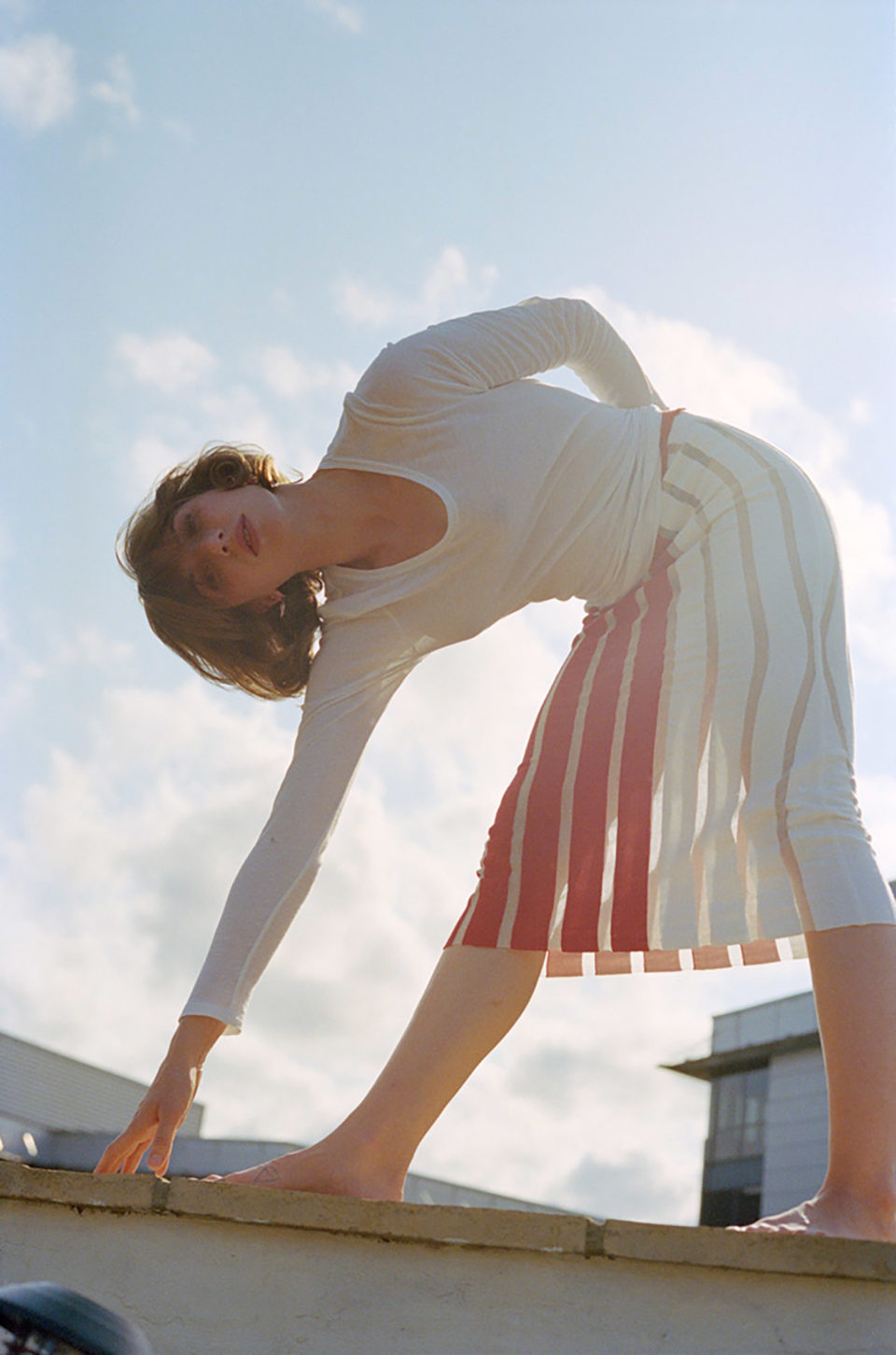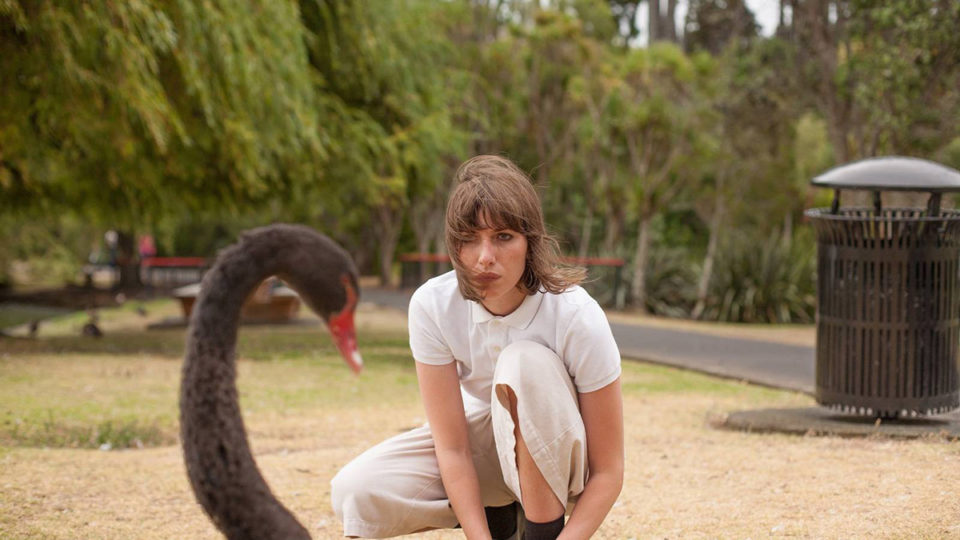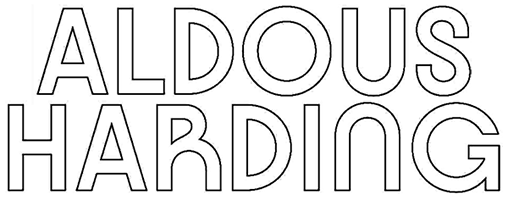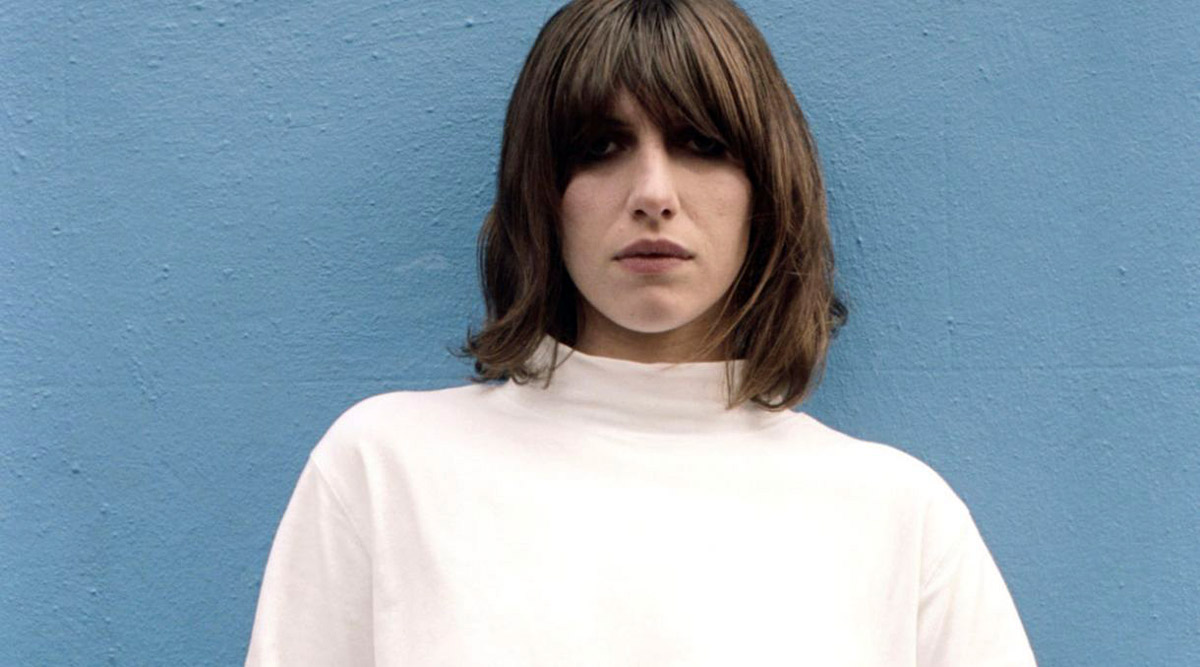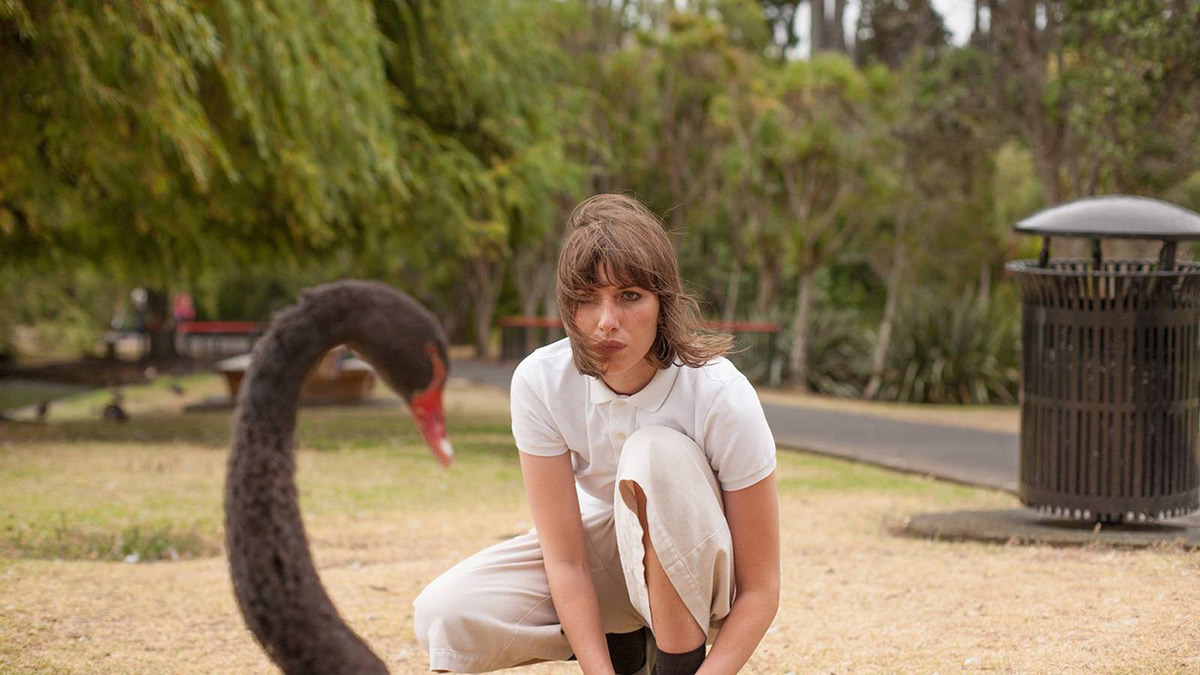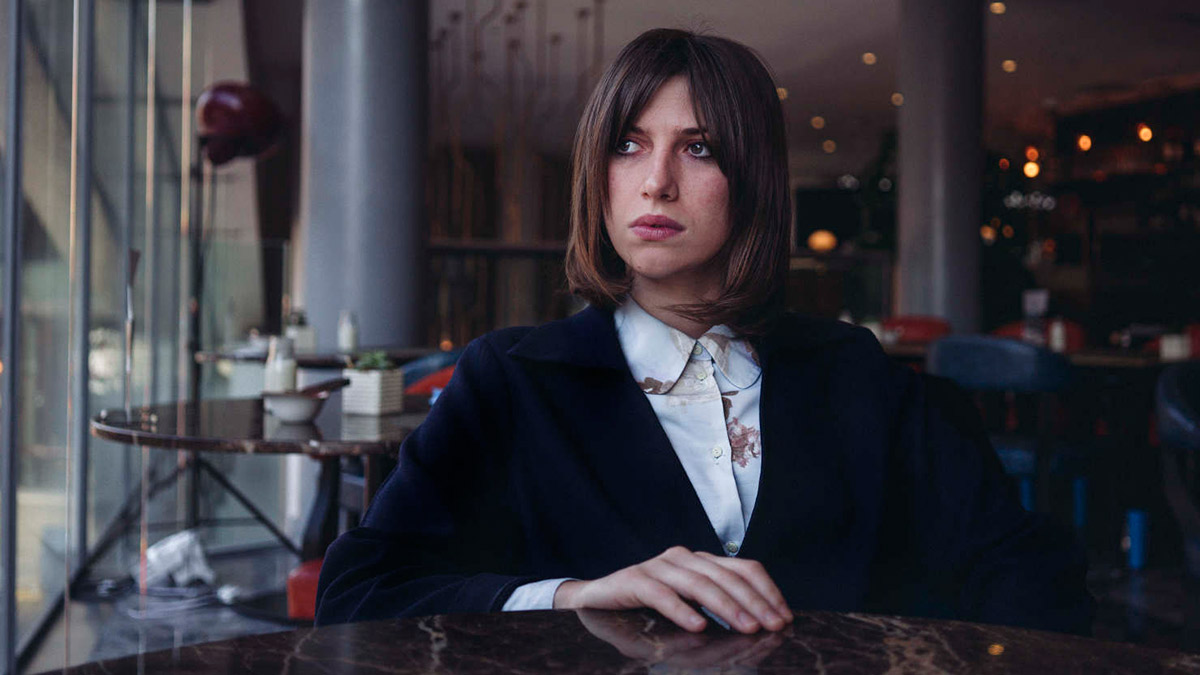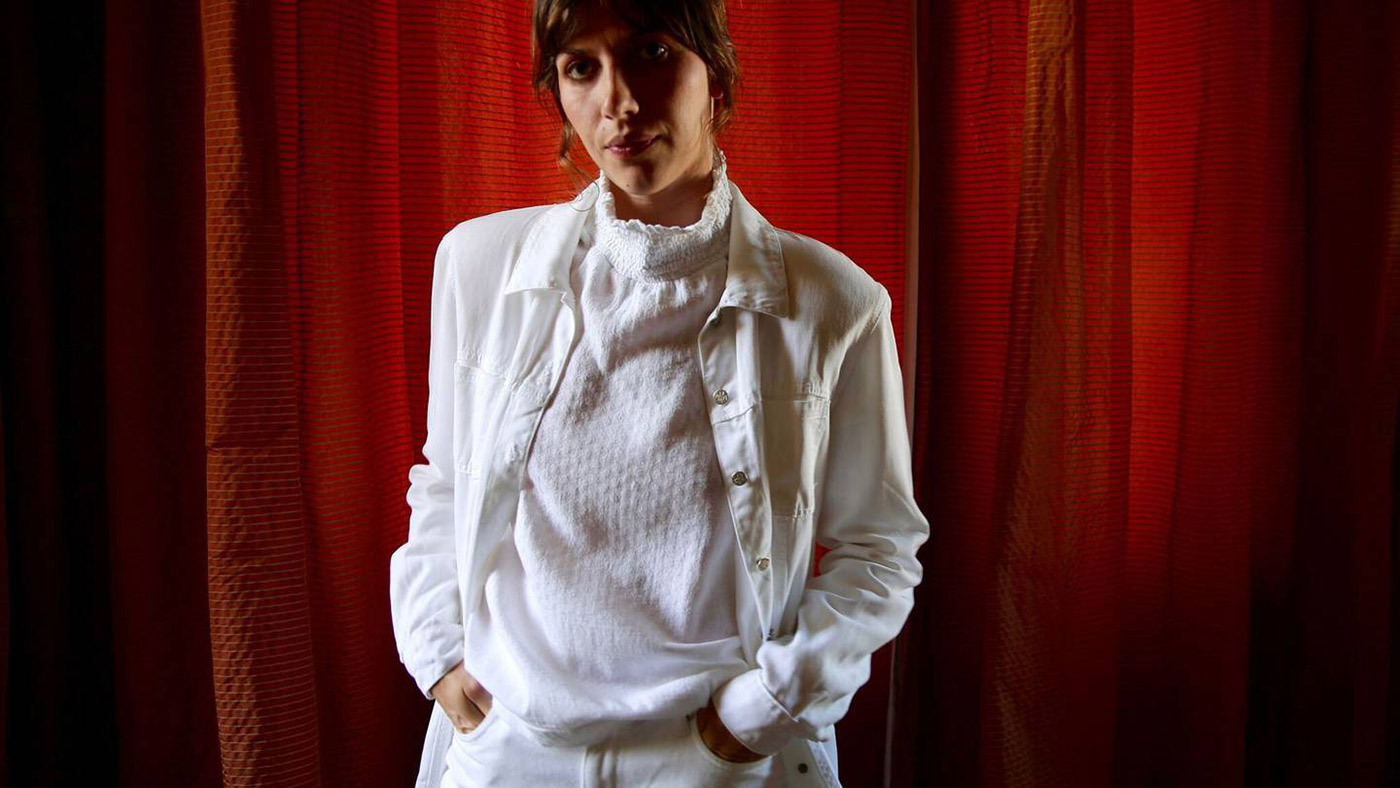By Marieke Hardy
The Saturday Paper | May 4, 2019
Feast your eyes on the compelling music video for her new single “The Barrel”, featuring, well, there’s no fair description for it other than “That Hat”; just go and witness it for yourself.
Then there’s the way Harding’s vocals can vary so dramatically from song to song that she may as well be seven completely different singers. Or her shy defiance when dealing with other humans on a personal level – this is not a people-pleaser. And even though she appears to unzip her entire being for scrutiny through her wildly poetic lyrics, she basically doesn’t want to be asked to explain them, or herself. Ever.
Aldous Harding is sort of like if Laurie Anderson had a baby with Björk, or if Kate Bush made a concept record with Crispin Glover. Her famed live performances see her tap in to some sort of emotional possession, inspiring such awed responses as this:
“I was totally terrified of her, but I couldn’t look away. She looks like she’s summoning ghosts when she sings.”
And a personal favourite:
“She’s like if Feist was a sleep paralysis demon.”
Harding’s slavishly anticipated new record, Designer, combines ethereal psych, kook folk and stories of love and healing as seen through an acid-hued kaleidoscope. Listening to it evokes the trippy joy of Lee Hazlewood and Nancy Sinatra, Sandy Denny’s wistful barfly vocals in Fairport Convention, and the stark emotional wanting of Nico.
Mention any of these references to Harding and she seems mostly… bemused.
“I don’t really – I mean I’m… It’s funny because I can never listen to my work the way other people can, and if that’s what it makes them think of – if that’s what it draws up for them – then who am I to say that it’s not? Because I have no idea what it’s like to listen to my work. It doesn’t affect me in a positive or a negative way.” Even after several listens the peerless Designer continues to unfurl. It’s poignant, and raw, and mysterious, and overwhelmingly a gift. It also tells whatever story a listener needs it to.
Interviewing Harding is like trying to have a conversation with a Rubik’s cube. Prone to lengthy pauses, she wades through her words, sounding out her thoughts in painstaking slow motion. Halfway through a long, considered response she will veer back in a startling new direction, often changing her mind completely – “scratch that, scratch that, it’s not that at all”.
Harding has been frank in the past about her mental health and troubled relationship with alcohol. But she regrets being so open in those previous interviews now, even though she’s aware that by being in the public eye she’s signed an invisible contract.
“I never wanted [the press] to be about the fact I was having trouble with alcohol. It was just something that I knew how to talk about because I thought about it every single day, and what I was going to do, and how I was going to fix it,” she says. “All these questions about my music and purpose and voices – I didn’t know any of that. But I knew that alcohol… I was in love with someone that wasn’t in love with me.”
The problem is “fixed” for now, she says, though she doesn’t want to go further into it lest she be misunderstood further – “scratch that” – and instead insists she’s focused on maintaining that connection to the unapologetic, unique instincts that brought her here in the first place.
“I’ve just got to follow my gut,” she says. “Your gut is a good one to listen to.”
Born Hannah Harding, she emerged onto New Zealand’s folk scene in 2014 with a self-titled album; she chose the stage name Aldous because she thought it seemed like “a manly Alice”. In her words, she was a “late bloomer” when it came to discovering music, although she doesn’t see this as a negative.
“It means that I don’t actually know necessarily what is cool or what that means. I mean, I know what’s cool but I’m not trying to be that. And even if I did try, my grasp of it is so vague that it wouldn’t come out sounding like that.”
Some of Harding’s earliest work involved collaborations with singer and fellow New Zealander Marlon Williams. Old YouTube clips of the pair, fresh-faced and utterly smitten, show them glancing shyly at each other onstage as they duet on Joan Baez covers, voices harmonising like entwined hands. Their romantic relationship continued with a move from Lyttelton, New Zealand, to Melbourne, where they shared a single bed above a pub in Abbotsford while trying to eke out solo careers.
It was Williams’ star that soared first, matinee idol-electric on the ABC television series The Beautiful Lie in 2015, before bursting into the American consciousness via a vivid performance on Conan O’Brien’s late-night talk show. Journalists swooned over him – “the impossible love child of Elvis Presley, Roy Orbison and Townes Van Zandt” – and the ensuing touring schedule was relentless.
While Harding accompanied the band for some of the tour, she was busy working independently on her own music. And her time was coming.
The relationship struggled to hold first his fame and then hers, resulting in a spectacular implosion and two near-perfect duelling break-up records. His was Make Way for Love, an apparent imploring for Harding to come back, and hers, Party, featured the ice-cold line on the track “Horizon”:
When you watch me play, does it feel bad, darlin’, when they choose me?
“Nobody Gets What They Want Anymore” was the supposed musical full stop to it all for both of them. Written by Williams, it is a heartbreaking song, a “definitely sociopathic” gesture by his description. Harding gamely agreed to sing on the track, though she recorded her vocals remotely from Los Angeles.
The linked narrative is one neither feels entirely comfortable with now. It’s clearly frustrating for Harding to be trapped beneath the amber of this previous relationship, despite the fact she and Williams invited us all to take a look in the first place.
“I don’t think Marlon’s necessarily sitting at home having a big old cry about Hannah Harding,” she says, when I ask about a pointed and poisonous new song of his, debuted on a recent tour. “He’s got… bits and pieces going on, I’m sure.”
We talk about the inability of Fleetwood Mac’s Stevie Nicks and Lindsey Buckingham to shake their “tortured, yearning ex” history, even suffering the ignominy of still being presented on stadium screens in a manner that suggests their 1977 Rumours-era feelings linger between them.
“But that’s part of that rock’n’roll machine, and I think that if people want to do that to myself and Marlon – they’re happy to, but we know what’s up. We know what’s going on. And we don’t owe anybody any kind of fairytale or explanation for it. It is what it is and I tell you what, if I ever sing with him onstage and someone tries to do a cuddly close-up I’ll pull the fingers or I’ll go cross-eyed… because it’s just nothing… that’s the really strange thing about what we do.”
With Designer, Harding breaks from the romantic claustrophobia of Party. It feels like a clean slate, a fresh start. I tell her the record has a healing aura about it, and she considers this.
“ ‘Healing’ hasn’t come up before but I think it’s a good one,” she says. “But it’s not meant to – it’s not me saying, ‘I’m healed’, or even that I need to be healed. It’s sort of like an unapologetic hug. It’s an excitable person just sharing, I suppose. It’s meant to make everybody feel… I don’t know. Anything.”
More nimble prevaricating from Harding, who is all too aware of the interpretations and meaning her devotees layer upon her dense lyricism. She understands that her art creates an intimacy with those who listen – that it may guide them towards or away from something important – yet is equally determined to keep those same people at arm’s length. A healthy tension, though one earned through experience.
“I know exactly what my songs are about and I try not to tell people, because a friend of mine really loves ‘Stop Your Tears’ and I made the mistake of telling her what it’s about one day,” she told The Sydney Morning Herald in 2015. “Now she has to distract herself and look elsewhere when I sing the last verse about being at the river with the baby, because she knows too much.”
When asked whether she makes music for her own catharsis or to put into the world for others, Harding affirms that it is both, but it’s clear nobody influences or crowds her very clear creative instincts. The video for “The Barrel”, which she co-directed with Christchurch filmmaker Martin Sagadin, seems like a tough verbal pitch – woman dances oddly in room of draped white fabric while wearing comedically large hat; hat drops to reveal troll-like mask beneath; some more jubilant dancing, this time in underpants; scene – but it somehow compellingly, beautifully, works, and has resonated hugely with her audience.
“The only reason that video made sense is because I believed it made sense. And some people get it and some people feel it and some people don’t. But I think what they all recognise is that there’s good intention and creativity. And you can’t really go wrong with that. I’m not afraid to look foolish, or to get it wrong. Or to admit that I’m trying.”
Another interminable pause.
“What’s funny about that video is that nothing happens, really, but there’s somebody so eager to give you a feeling. And that’s all I’m ever trying to do is show that quite a normal person can do that for you, or wants to do that, and it’s their job, and isn’t it nice that someone’s just trying that for you, for themselves? And the shamelessness of it, and how sexy that is.
“It’s important that there’s a feeling, above all else.”
Harding’s rising international profile has seen her not only signed to influential British indie label 4AD, and collaborating with longtime PJ Harvey producer John Parish, but also throwing herself headlong into a punishing 2019 touring schedule. It will take her far from her new home in Wales, where she now lives with her partner, Huw Evans, a musician known as H. Hawkline, who also plays in her band.
Even after several listens the peerless Designer continues to unfurl. It’s poignant, and raw, and mysterious, and overwhelmingly a gift. It also tells whatever story a listener needs it to, since it’s obviously not Harding’s responsibility to teach people how to respond to her magical art, and besides which she’ll probably be too busy channelling whatever dimension she’s hooked into to access her utterly left-of-centre take on the world.
“That’s one of the excitements of being a madwoman, I suppose,” she muses. “You’re never bored.”
Featured Image: Singer-songwriter Aldous Harding in her music video for “Fixture Picture”. (Photo: Aldous Harding, Facebook)
